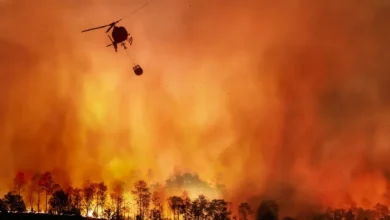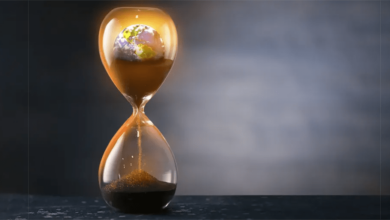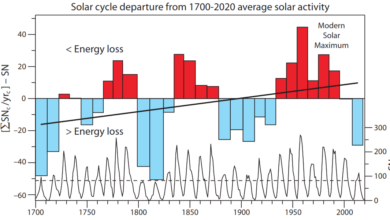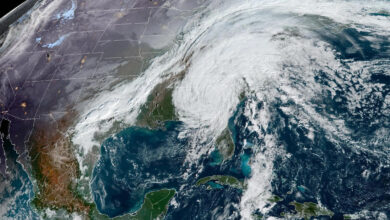The Cold Truth About Renewable Energy in the Pacific Northwest
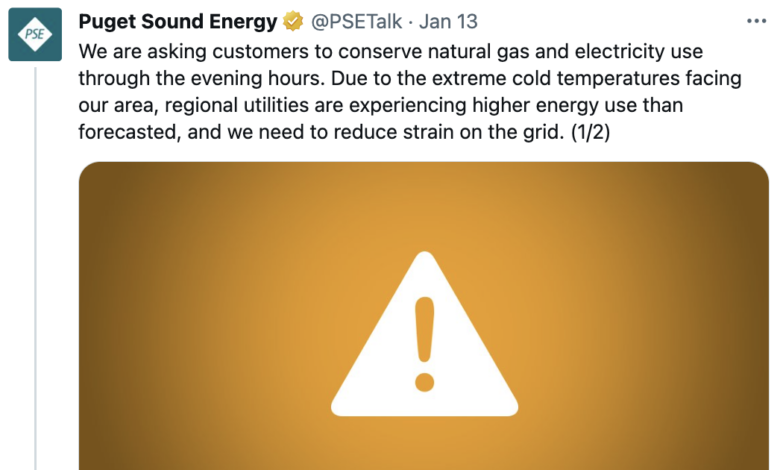
Over the weekend I received several messages from Puget Sound Energy to reduce my energy use, both gas and electric, with the implicit threats of potential blackouts (see below).
Avista Energy (eastern Washington/Idaho) and other utilities made similar requests from their customers.
The key reasons for the worries?
The cold weather caused a large increase in energy demand and radically reduced the output of renewables (mainly wind in our region). For a few hours, there was also a problem with PSE’s gas storage facility south of Olympia.
This blog will describe the situation and why renewable energy tends to plummet just when energy demand is highest. It is also a warning that politicians and energy activists need to consider.

Let us begin by looking at electricity demand and supplies over the Pacific Northwest for the past week provided by the Bonneville Energy Administration (see below). The total demand (red line) increased rapidly between January 11 and January 14 (Saturday) as frigid Arctic air moved into the region and remained quite high on Sunday. Huge demands to keep our homes and buildings warm.
Most of this energy demand was met by hydrogeneration (blue line). Nuclear energy provided a steady energy source but at a lower level (purple).
But now look at renewables (the green line). This is nearly entirely winds since solar is extremely low over the Northwest during mid-winter.
Wind produced about a third of what hydro did before the cold air moved in, increased slightly at gusty northerly winds brought in the cold but collapsed to near zero once the cold air was in place.
To repeat, once cold air moves into the region and demand is at a maximum, winds calm out and renewables are no longer a significant source of energy in the Pacific Northwest. During summer heatwaves something similar happens: wind energy collapses during the warmest days.
So you understand this wind collapse issue better, let me show you a series of surface wind maps for the region (actually some highly accurate short-term forecasts of near-surface winds). When you look at these maps, consider that most of the wind turbines are in eastern WA/Oregon.
At 10 PM last Tuesday, there were some decent winds east of the Cascades (orange, yellow, and red colors).
10 PM Tuesday
Winds and thus wind energy held up on Thursday as strong northerly winds brought in the cold air.
10 PM Thursday
But by 10 PM Saturday, the winds had collapsed over most of the inland regions.
10 PM Saturday
And plummeted even further by 10 PM Sunday.
The winds at Ellensburg, well placed within wind turbine country, tell the story as well. Plenty of wind when the cold air started to move in but collapsed during the past few days.
This case is not unique. The same thing happens in virtually every cold wave.
So when we need the energy the most–to keep warm– renewable energy will virtually always fail in winter.
And the name thing happens on a national scale…and is happening as I write this. Below are the national statistics for the past week.
Wind energy (green line) dropped greatly as the cold air settled in over much of the U.S.. The only thing that kept the lights on was the increased use of natural gas (dark yellow line) and coal (red line).

The message of this information is clear. Renewables such as wind energy are generally not reliable sources of energy in our region during cold wave situations when demand is highest.
Hydrogeneration is extraordinarily valuable and flexible and any suggestions to reduce hydrogenation resources (such as removing the Snake River dams) is highly irresponsible.
Natural gas, a very clean source of heat, is still acutely needed and attempts to reduce supply or to prevent gas heating in buildings are highly irresponsible as well.
And keep in mind that the energy problem will only get worse as the regional population grows and more folks buy electrically powered vehicles.
Considering the acute deficiencies of renewables in our region (other than hydro) during cold and warm periods, we must take a more serious look at expanding nuclear power. We can also work on the energy efficiency of our buildings, demand scheduling (such as controllable driers/washers/home thermostats), and better energy storage (although there are no magic bullets on that).
But reality is reality and climate/energy advocates need to understand the underlying problems and refrain from unrealistic demands.







